Discount rate variation (equivalently expected returns, risk premiums) is now at the center of asset pricing questions, from bubbles to the nature of the crash.
----- John Cochrane, Presidential address to the American Finance Association.
As John Cochrane notes, it is hard to understand stock price movements and related risks without taking account of variation in discount rates. While this is true in general, during the first nine months of this year the market story has, in our view, been primarily one of discount rates.
For a market index like the S&P 500, the discount rate is the sum of two components: the risk-free rate (usually measured by the ten-year Treasury Bond yield) and the equity risk premium (ERP), which is the added return investors expect to earn for bearing the greater risk of equities as compared to government bonds. As such the ERP is not directly observable and must be estimated. Here we use the approach employed by Prof. Aswath Damodaran to estimate the ERP, which he graciously provides on his website and updates each month.
The first chart plots the yield on the ten-year Treasury. It shows that beginning in 2020, the ten-year Treasury yield began a historic run-up which took it from 0.55% to 4.57% by the end of September 2023. Furthermore, during much of that time the inflation rate was slowing so the real rate rose along with the nominal rate. Because the discount rate rises one for one with increases in the risk-free rate, one would have expected a pronounced decline in stock prices if the rising interest rates were not offset by other factors.
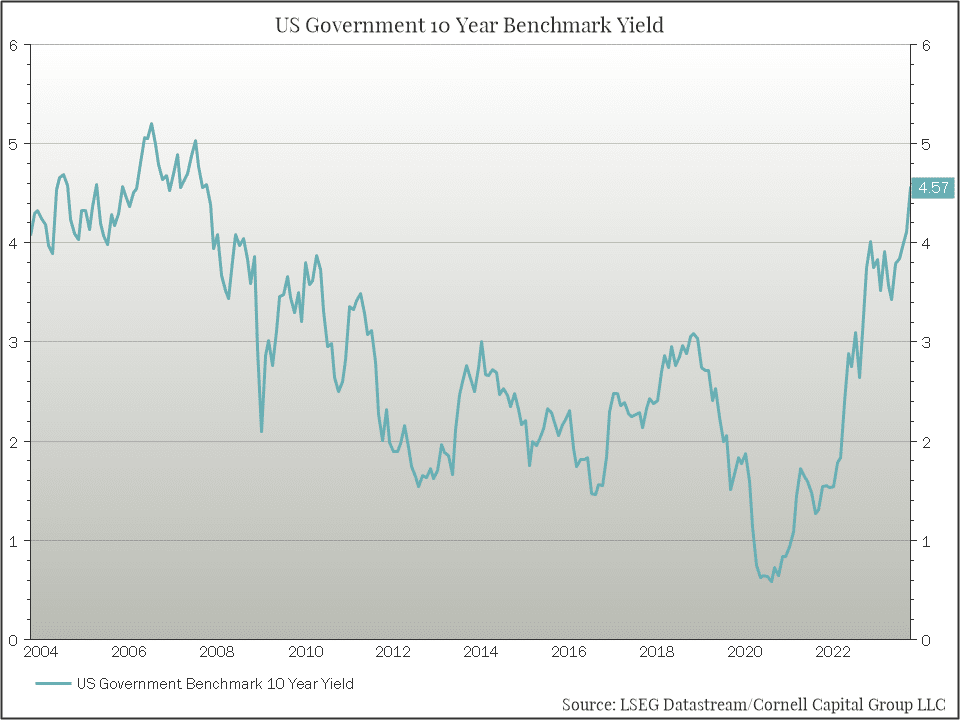
However, other factors were not constant. Most importantly, the next chart shows that over the same period the equity risk premium declined. Most notably it dropped significantly in 2023, including the third quarter. This drop in the ERP offset to an extent the impact of rising interest rates. The chart also shows that the ERP of 4.84%, which Damodaran calculated, as of October 1, 2023, is well below the long-run average of 5.49%. The low premium implies that the market concluded, at the end of the third quarter, that we were in a relatively low risk environment.
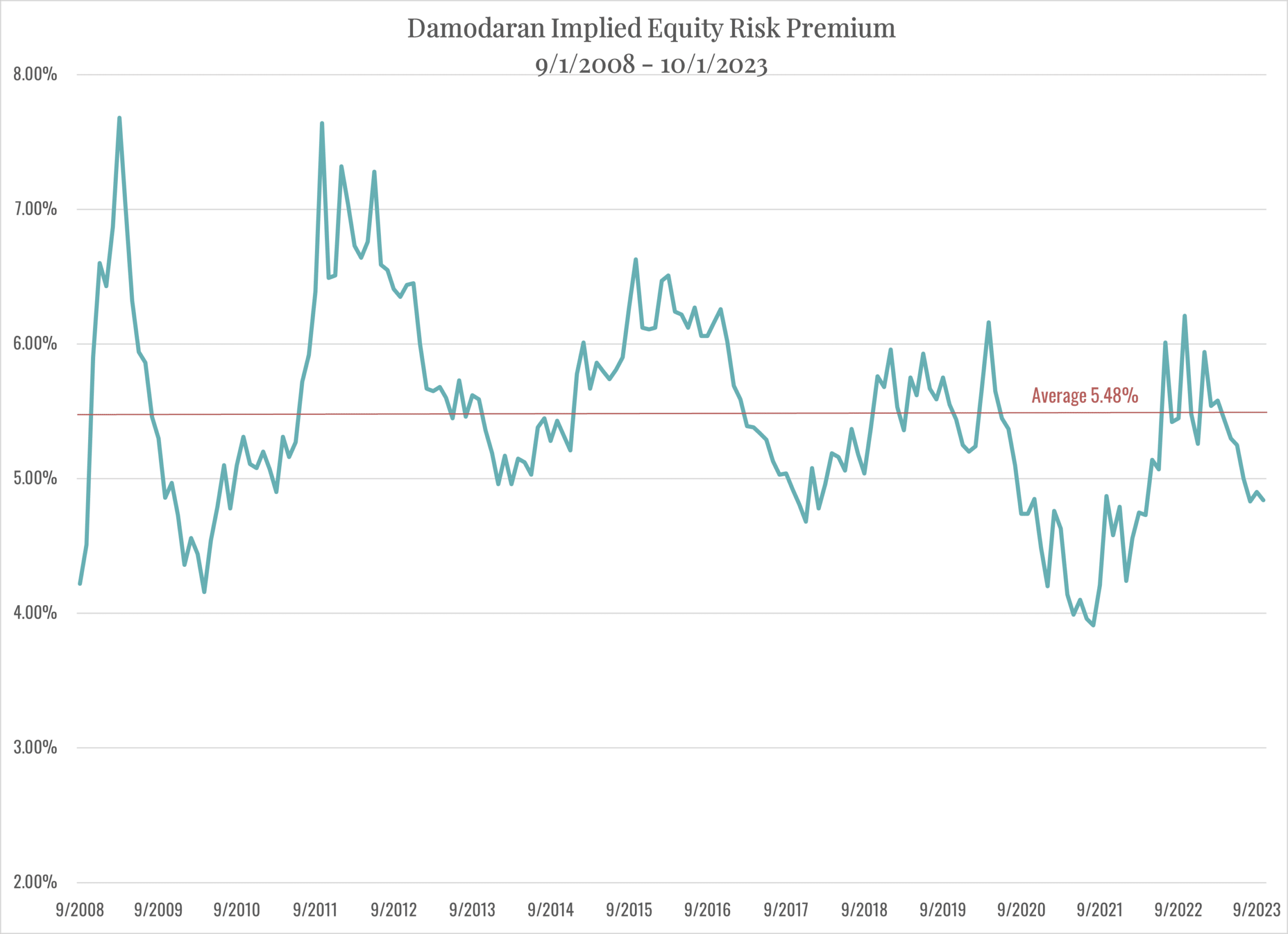
As noted above, the discount rate is the sum of the risk-free rate and the ERP. Our next chart, taken from analysis posted by Prof. Aswath Damodaran, is an area plot which shows the sum of the ten-year Treasury yield and the ERP. The chart shows that the discount rate is currently close to a decade high.
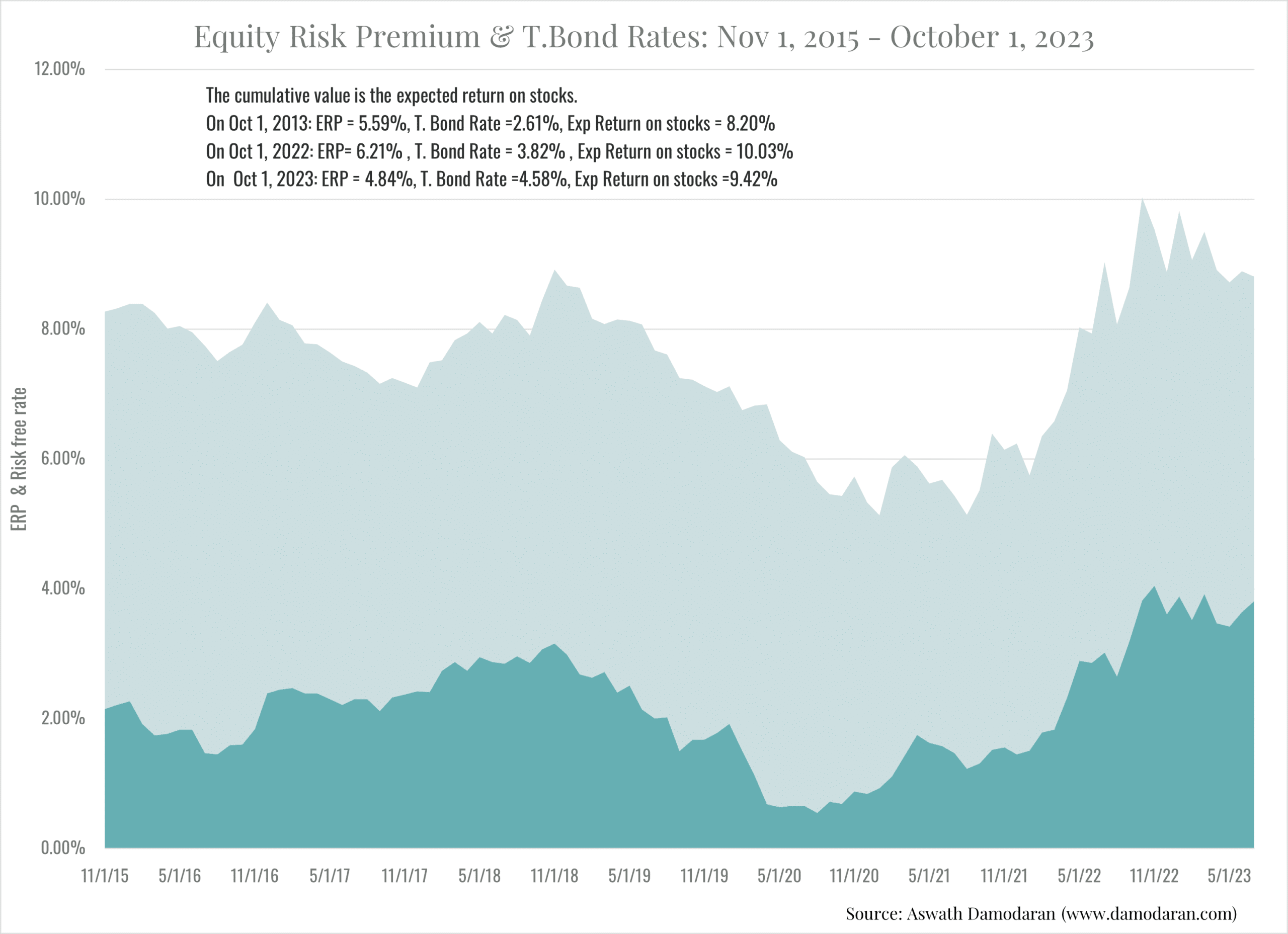
To provide perspective, the next chart demonstrates how sensitive the valuation of the S&P 500 is to changes in the equity risk premium component of the discount rate. Using the valuation inputs described by Damodaran, we plot the implied value of the index for various equity risk premiums ranging from 4% to 6.21% (and holding the risk-free rate constate at the current ten-year treasury yield of 4.55%), the former being at the low end of Damodaran’s premium and the latter being the high end of the ERP one year ago. The chart shows that an increase of only 53 basis points in the ERP would lead to a 10.3% drop in stock prices from the September end level of 4,288 to 3,847. On the other side, a drop of 47 basis points in the ERP would result in a 11.4% increase in the S&P 500 to 4,776. If the ERP were to rise back to its historical average of 5.48%, stock prices would fall to 3521. Finally, if the ERP rose back to 6.21% where it was last October, at current bond yields, it would imply a level of 3,122 for the S&P 500 – a drop of over 27%. To be clear, these are not forecasts, but rather simply the implied levels of the stock market for various ERP’s using Damodaran’s valuation calculation.
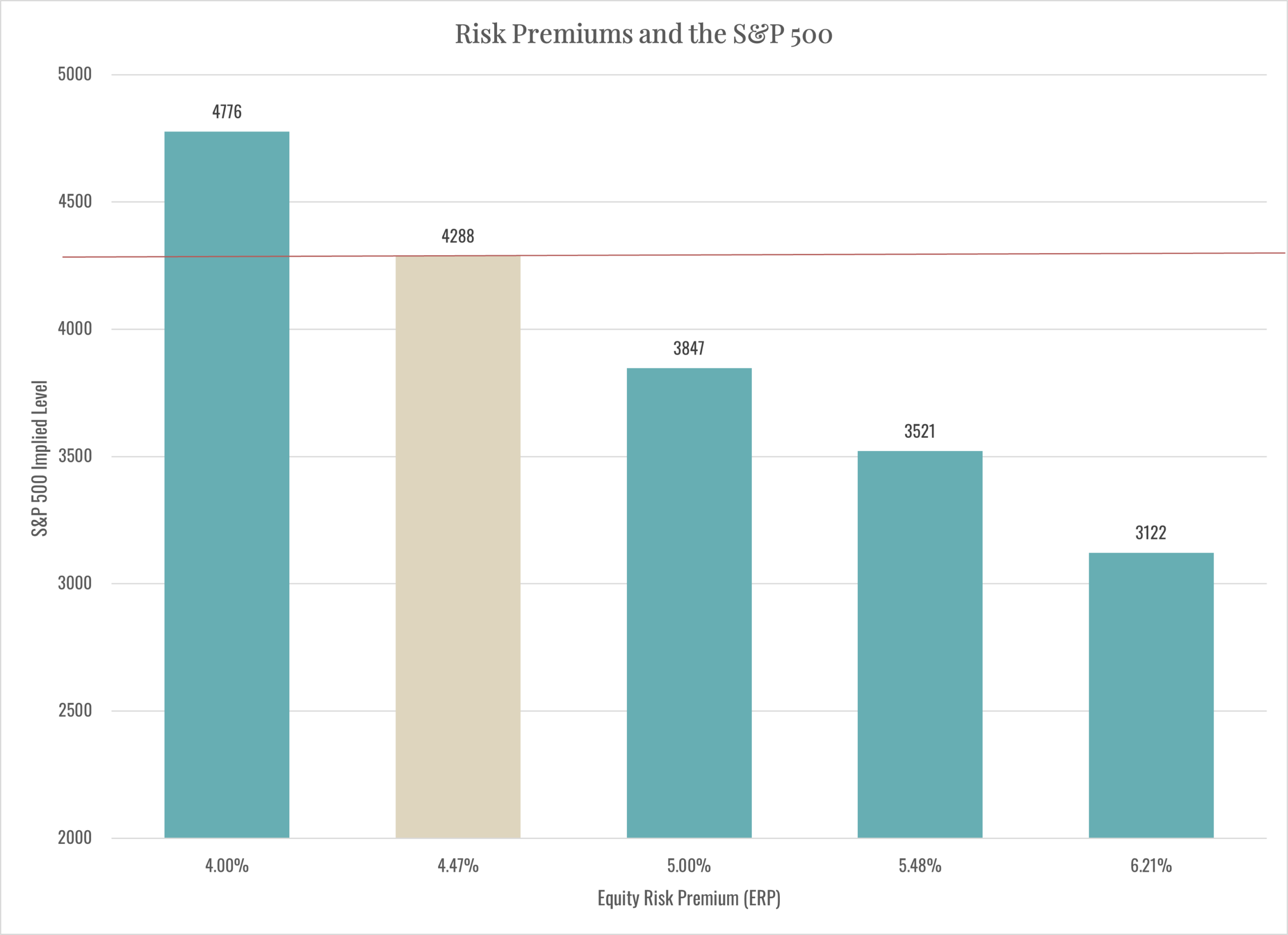
What concerns us is that the ERP seems to be unexplainably low given the current economic risks. Those risk include economic tensions with China, the war in the Ukraine, the out-of-control government budgets, the general disfunction in Washington, and the uncertainty about elevated inflation and interest rates. To gain further perspective on the situation, we turn to the VIX index. The VIX is often called the “fear Index” because it measures expected market volatility over the next thirty days. The chart below shows that the VIX index is consistent with the view that the market has concluded that we are in a relatively low risk environment. The index is below its long-run average and way below the levels to which it spiked during the financial crisis and the onset of the pandemic. In fact, it is near a low point for the years following the financial crisis.
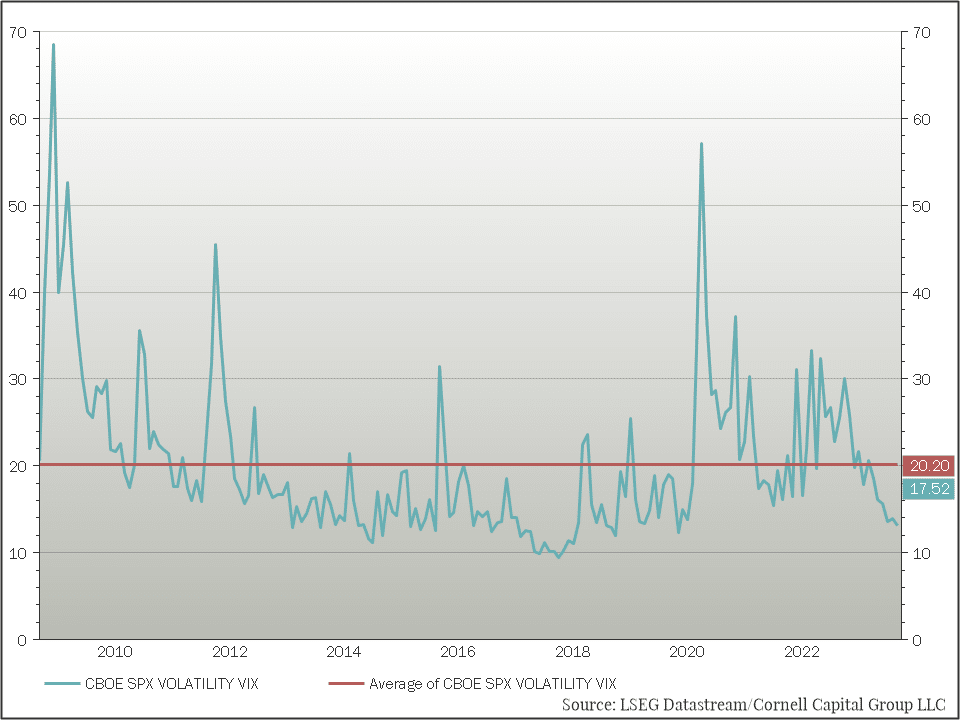
Risk premiums also play an important role in the bond market. The difference between the promised yield on corporate bonds and Treasury bonds of the same duration, commonly called the credit spread, reflects the two major bond market risks. The first is the risk that the corporate bonds will default. The second is the greater systematic price fluctuation (the betas) of the corporate bonds compared to Treasury bonds. One widely followed spread is the yield differential between BB corporate bonds (the rating just below investment grade) and similar duration Treasury bonds. This spread is a more sensitive measure of risk than spreads involving high grade corporate bonds. Notice how the spread spiked during both the financial crisis and the onset of the pandemic just as the VIX index did. Also, like the VIX, the BB credit spread is currently well below its long-run average and near all-time lows dating back to September 2008.
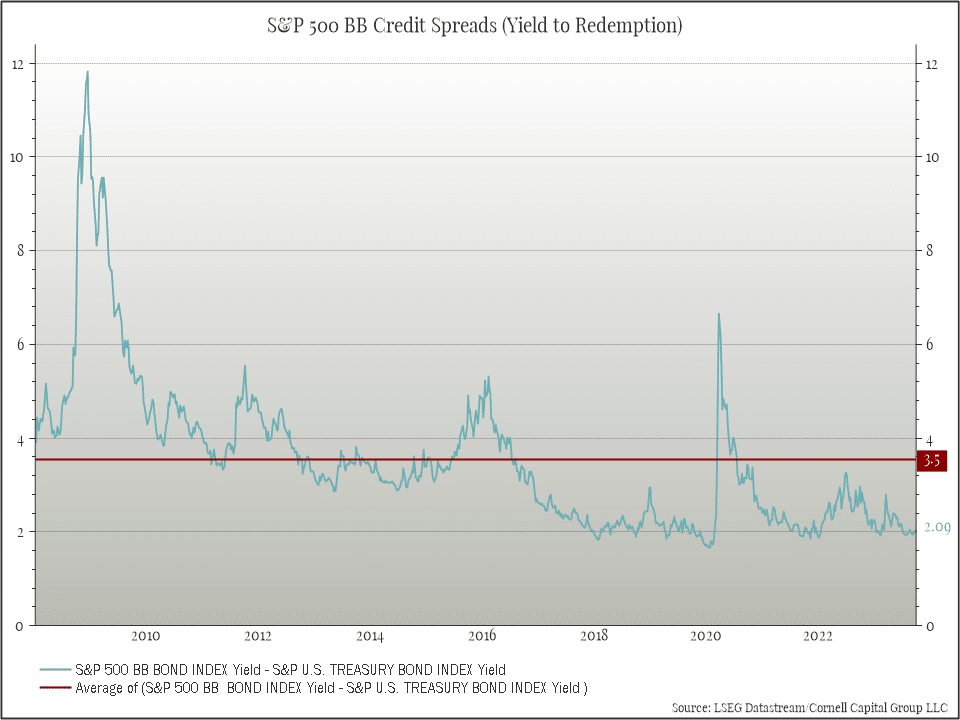
Conclusion
When it comes to risk assessment we disagree with the markets. In our view these are highly risky times. We are particularly concerned with the operation of the Federal government, the unsustainable budget deficits, international tensions, and the potential for inflation and interest rates to remain elevated. In our view, the risk premiums being offered in the market are not sufficient rewards for the risks being borne. Accordingly, we have been working to reduce market exposure, including the development of new option hedging strategies to manage risk. We plan to remain cautious until risk/return trade-off improves.
This memorandum is being made available for educational purposes only and should not be used for any other purpose. The information contained herein does not constitute and should not be construed as an offering of advisory services or an offer to sell or solicitation to buy any securities or related financial instruments in any jurisdiction.
